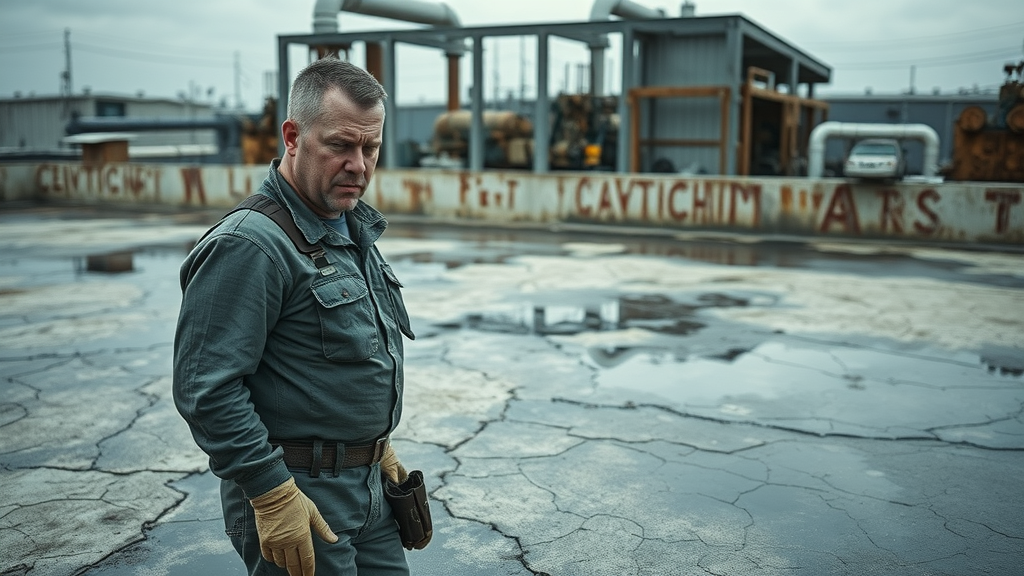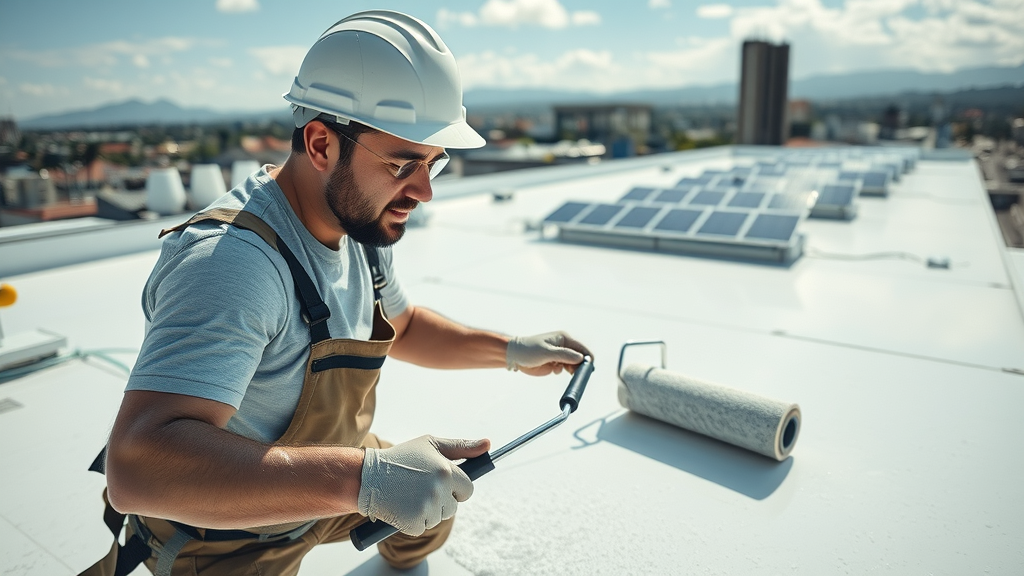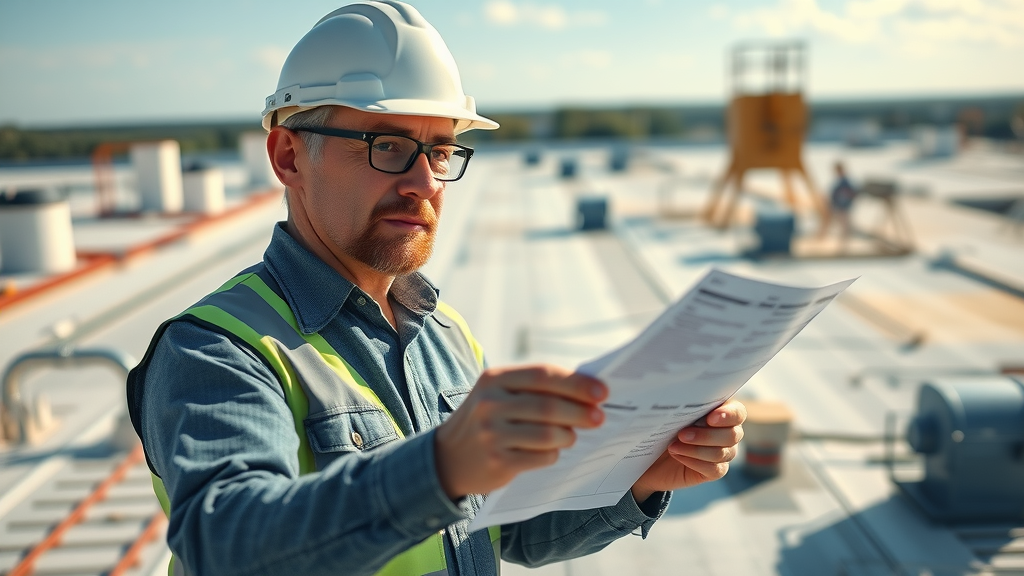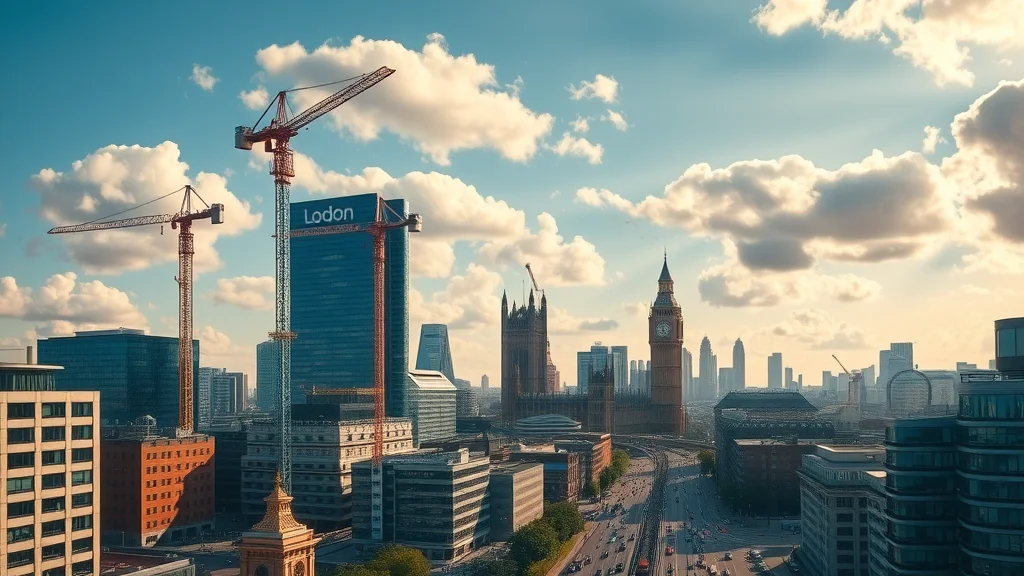Did you know that over 30% of commercial roofing failures are completely preventable? Whether you're responsible for a single property or a whole portfolio, overlooking a small mistake on your commercial roofing system can quickly snowball into costly repairs, interrupted business operations, and even asset loss. In this comprehensive guide, you'll discover how to spot and prevent the most common commercial roofing errors, why they're more costly than you think, and the expert steps every business owner should take to protect their investment. Keep reading—missing even one tip could cost your business big!
Avoiding Critical Commercial Roofing Errors: Protect Your Investment
- Did you know that over 30% of commercial roofing failures are due to preventable mistakes? In this article, discover how to spot, prevent, and mitigate common commercial roofing system errors that threaten your business assets and profitability.

As a business owner or facilities manager, your commercial roof isn’t just another building component—it's a shield for your entire investment. Every overlooked detail, from scheduling regular inspections to ensuring your roofing contractor uses quality roofing materials, impacts not only operational safety, but the bottom line of your business. Commercial roofing systems are engineered for longevity, but only if you avoid common and costly errors that affect structure integrity and value. Adopting best practices now will save you thousands (sometimes tens of thousands) of dollars in unplanned repairs and costly downtime later. Below, we break down the most expensive mistakes and show you actionable solutions to secure your property, finances, and reputation.
To further reduce the risk of unexpected issues, it's wise to familiarize yourself with the full range of commercial roofing services available in your area . Understanding what professional contractors offer can help you make informed decisions and avoid pitfalls that often lead to expensive repairs.
Key Insights: What You'll Learn About Commercial Roofing
- The most costly commercial roof mistakes and how to avoid them
- Differentiation between commercial roofing and residential roof solutions
- Crucial steps for choosing the best roofing system for your property
- How to maintain your commercial roofing system for long-term value
- Real-world examples and expert guidance to inform your purchasing decisions
Overview of Commercial Roofing Systems and Their Impact
Understanding Commercial Roofing and Its Importance
- Defining commercial roofing, core features of commercial roof design, and the impact on overall building integrity for business owners.

Commercial roofing refers to specialized roofing systems designed for businesses, industrial centers, warehouses, office parks, and commercial complexes. Unlike residential roofing—which is often limited in size and exposed only to minor household stressors— commercial roofs must endure large surface areas, more frequent foot traffic, and exposure to demanding weather conditions. The right roofing system protects high-value equipment (like HVAC units and solar panels), helps maintain interior comfort year-round, and even impacts the value and insurability of your property. For every building owner , understanding the unique challenges and demands of a commercial roofing system is essential to safeguarding your business.
Key features of commercial roofing design include low-slope or flat configurations, robust drainage systems, and specialized materials such as TPO, EPDM, metal roofs , or built-up systems. A minor oversight in maintenance or installation can compromise these features, leading to water intrusion, structural damage, and significant operational disruption. By viewing your roof as an integral asset—and not just a protective “lid”—you'll make smarter decisions that increase safety and reduce total cost of ownership.
Comparison: Commercial Roofing vs. Residential Roof
- Examining differences in materials, installation, and maintenance between commercial roofing systems and residential roofs.
The differences between commercial roofing and residential roofs go beyond simple size. Residential roofing tends to use steeper slopes and materials like asphalt shingles , designed for aesthetics and home-scale weather protection. In contrast, a commercial roof often features flat designs and industrial-strength materials intended for heavy usage and exposure to extreme weather or heat. Maintenance protocols also differ—while many homeowners address issues seasonally, business properties demand regular inspections and preventative measures to avoid liabilities and expensive interruptions.
Installation of roofing systems on commercial properties requires skilled specialists who understand technical demands, such as complex drainage, reinforcement around mechanical equipment, and compliance with local building codes. Simply put, mistakes on a residential roof may lead to inconvenience, but errors or shortcuts on a commercial roofing system risk lost revenue and potential liability. Choosing the right roofing contractor —one experienced in both roof coating and commercial-grade materials—can be the difference between a seamless system and a maintenance nightmare.
The True Cost: Average Expenses for a Commercial Roof
| Type of Roof | Initial Cost (per sq. ft.) | Average Lifetime (years) | Estimated Maintenance Cost (Lifetime) | Total Lifetime Cost (Est.) |
|---|---|---|---|---|
| Flat (TPO/EPDM) | $5–$10 | 20–30 | $6,000–$12,000 (per 10,000 sq. ft.) | $56,000–$112,000 |
| Metal Roof | $7–$15 | 30–45 | $4,000–$10,000 | $74,000–$160,000 |
| Asphalt Shingle | $4–$7 | 15–25 | $7,000–$15,000 | $47,000–$85,000 |
- Explore cost factors for different commercial roofing material types and real-life case studies of budget overruns due to overlooked roofing system issues.
The total investment for a commercial roof depends on your chosen roofing materials , the size of your property, and maintenance commitment. As reflected in the table above, costs can escalate quickly—especially if hidden problems or bad installations emerge after the project. There are tragic examples where building owners cut corners with subpar roof coatings or bargain contractors, only to end up paying twice for repairs and battling lost productivity due to roof leaks. It's not just about the initial outlay; routine upkeep, timely repairs, and choosing the right roofing system at the outset will protect your profits in the long run.
Real-life case study: A manufacturer opted for low-budget roofing materials to save on installation. Poor drainage design led to water pooling, requiring emergency repairs, business interruption, and eventual replacement within just eight years—turning a “cheap fix” into a six-figure loss. Investing wisely in the right commercial roofing systems , with proper warranties and preventive inspections, isn’t just prudent—it’s essential for asset protection.
7 Expensive Commercial Roofing Mistakes to Avoid
- 1. Neglecting Regular Roof Inspections
- 2. Choosing the Wrong Roofing Systems for Climate/Usage
- 3. Overlooking Proper Roof Coating or Roof Coatings Maintenance
- 4. Ignoring Minor Leaks in Commercial Roofing Systems
- 5. Using Subpar Roofing Material or Roofing Materials
- 6. Cutting Corners on Roofing Contractor Selection
- 7. Poor Planning for Commercial Roof Repairs and Lifespan

Every commercial roofing project brings risk—but the most common risks are entirely preventable. Neglecting regular roof inspections is the first and most costly mistake, since unnoticed damage (even minor leaks) can balloon into major structural repairs. Choosing the wrong roofing system for your climate or foot traffic is another frequent error, as materials not designed for regional weather conditions or building use are prone to fail. Overlooking roof coatings or skipping timely reapplication leaves surfaces exposed to UV and moisture—all threats that shorten lifespan and increase costs.
Using substandard roofing material may provide short-term savings, but metal fatigue, compromised seams, or low-quality coatings often result in replacement far ahead of schedule. Cutting corners when selecting a roofing contractor—based purely on price—leads almost inevitably to inferior installations, warranty issues, and payouts for fixes not covered by insurance. Finally, the lack of a clear maintenance plan spells trouble: unplanned repairs always cost more and create unpredictable downtime for your business.
"A small leak neglected today can turn into a major headache and expense for building owners tomorrow." — Certified Commercial Roofing Specialist
Choosing the Right Roofing System: Avoiding Product and Installation Pitfalls
Evaluating Commercial Roof Coating and Roofing Material
- Best practices for selecting high-performance commercial roofing systems, highlighting the benefits of metal roofs, roof coatings, and energy-efficient alternatives.

Selecting the right roofing materials isn’t just about budget—it’s about performance and longevity. Metal roofs are preferred for their durability and energy efficiency, often lasting over 40 years with minimal upkeep. Meanwhile, advanced roof coating technologies can extend the lifespan of both new and existing commercial roofing systems , offering reflective properties that reduce cooling costs and protect against harsh sunlight. Energy-efficient alternatives such as cool roofs or specialized membrane systems provide significant long-term savings and sustainability benefits.
When evaluating your options, always consider local weather conditions , building usage, and future maintenance needs. Consult with trusted contractors to compare the advantages of TPO , EPDM , built-up roofing , and emerging coating products. An experienced professional can help you balance upfront cost, anticipated foot traffic, and long-term durability, ensuring every dollar delivers real value for your commercial building .
Common Missteps in Roofing System Installation
- Why improper installation remains a top cause of costly commercial roof system failures and how to spot an expert commercial roofing contractor.
Improper installation is one of the primary causes of premature commercial roof failure. Even with high-quality roofing materials and coatings, a rushed or below-standard installation exposes your facility to water ingress, accelerated wear, and voided warranties. Reputable roofing contractors recognize subtle details—such as seam overlaps, flashing alignment, and drainage integration—that average installers might miss.
To avoid these missteps, always vet your contractor’s credentials. Look for a track record of successful commercial roofing projects , proper licensing, insurance, and real client testimonials. Ask for details on their installation process, material suppliers, and aftercare services. Qualified professionals are eager to share their process and demonstrate why they’re the best fit for your unique roofing project.
Role of Maintenance: Extending Your Commercial Roof’s Life
- Maintenance schedules and essential care strategies for commercial roofing, including periodic inspections, prompt repairs, and preventive roof coating.

Long-term protection of your commercial roofing system comes down to regular maintenance. Scheduling biannual inspections by certified professionals allows you to spot emerging issues before they escalate, saving thousands in potential repairs. Promptly addressing minor leaks, worn sealants, or blocked drains prevents costly disruptions and irreparable structural damage.
Implementing a consistent maintenance plan—complete with detailed checklists, routine cleaning, and surface evaluations—also ensures your roof coating or membrane stays in optimal condition. Preventive actions, such as re-coating at recommended intervals and responding swiftly to wind or storm debris, maximize your roof’s resistance to extreme weather conditions . Investing in maintenance isn’t just about “fixing what’s broken” but about preserving the capital value of your entire property.
Building Owners’ Guide: Selecting Quality Contractors for Commercial Roofing Projects
- Core criteria every building owner should follow when seeking commercial roofing systems professionals, including vetting, warranties, reviews, and safety certifications.

Every successful commercial roofing project begins with selecting the right contractor. As a building owner , it’s crucial to vet candidates not only for price, but for expertise, safety standards, and reputation. Always request proof of insurance, professional certifications, and references from recent projects similar in size and scope to yours.
Inquire about installation methods, the specific roofing systems they specialize in, and the brands of roofing materials used. Make warranty options a priority—top professionals offer robust guarantees on both materials and workmanship. Read online reviews and ratings to gauge customer satisfaction. A reputable commercial roofing contractor will provide transparent estimates, outline a clear project timeline, and prioritize safety throughout every phase of the job.
- Watch a walkthrough showing warning signs on commercial roofs and the best steps for rapid intervention.
People Also Ask: Insights on Commercial Roofing
What is the average cost of a commercial roof?
- The average cost of a commercial roof varies depending on material, roof size, and complexity. On average, expect $5 to $12 per square foot, with additional charges for specialty roofing systems and unique designs.
What is considered commercial roofing?
- Commercial roofing refers to all types of roofing systems designed for commercial buildings, such as warehouses, offices, shopping centers, and industrial complexes—distinct from residential roofs in scale, structure, and materials.
What is the most common type of commercial roof?
- The most common types of commercial roofs are flat or low-slope roofing systems, including membrane roofs (TPO, EPDM), metal roofs, and built-up roofing systems, each offering specific performance benefits.
What is the difference between residential and commercial roofing?
- Residential roofing generally uses steeper slopes and materials like asphalt shingles, while commercial roofing typically uses flat or low-slope designs with heavier-duty roofing systems, larger surface areas, and greater technical demands.
FAQs: Essential Commercial Roofing System Questions Answered
- How often should I inspect my commercial roofing systems?
Most experts recommend inspecting your commercial roofing system at least twice a year, particularly after severe weather events. Regular checks help identify concerns before they escalate into costly repairs, ensuring your roof maintains its structural integrity and waterproof performance.
- Are roof coatings worth the investment for a commercial roof?
Roof coatings can significantly extend the lifespan of both new and existing commercial roofs . They serve as an extra barrier against moisture, UV damage, and thermal expansion. While upfront costs may vary, the long-term savings—through improved energy efficiency and reduced maintenance—make coatings a smart investment for most facilities.
- Can I install a new commercial roofing system over an old one?
In some cases, it is possible to install a new commercial roofing system over an existing one, provided the underlying structure is sound and local building codes permit it. Always consult with a knowledgeable roofing contractor to assess structural load capacity and review eligibility before proceeding.
- What warranties should building owners expect with a new commercial roof?
Leading roofing contractors typically offer both material and workmanship warranties for commercial roofing projects . Expect material warranties ranging from 10 to 30 years, and workmanship guarantees up to 10 years. Always review warranty details carefully and clarify conditions for coverage, maintenance, and transfer.
- See real-world before-and-after footage of costly commercial roofing errors and how professional intervention can save your business.
Summary of the Most Common Commercial Roofing Mistakes and How to Prevent Them
- Schedule biannual inspections by certified professionals.
- Choose climate-appropriate roofing systems and materials.
- Invest in quality roof coatings and maintain them regularly.
- Repair all leaks and damage immediately—never wait.
- Partner with reputable, experienced roofing contractors only.
- Plan for the full lifespan of your commercial roofing system —budget for ongoing maintenance and preventive measures.
If you’re ready to take your building’s protection to the next level, consider exploring the broader principles of proactive roof care. The roof maintenance strategies outlined by industry experts can help you develop a comprehensive plan that not only prevents costly mistakes but also extends the life of your entire roofing system. By staying ahead of potential issues and investing in regular upkeep, you’ll safeguard your business assets and ensure peace of mind for years to come. Dive deeper into advanced maintenance techniques and discover how a proactive approach can transform your property’s long-term value.
Request a Custom Commercial Roofing Consultation to Secure Your Investment
- Protect your business from costly commercial roofing system mistakes. Contact our expert team for a tailored inspection and quote today.
To deepen your understanding of commercial roofing systems and their benefits, consider exploring the following resources:
This article provides an overview of various commercial roofing options, including spray foam, single-ply membranes, and metal roofing, detailing their advantages and considerations.
GAF offers insights into different commercial roofing materials, such as asphaltic and single-ply systems, along with guidance on proper installation techniques.
By reviewing these resources, you can make informed decisions to protect and enhance your commercial property.
 Add Row
Add Row  Add
Add 



Write A Comment